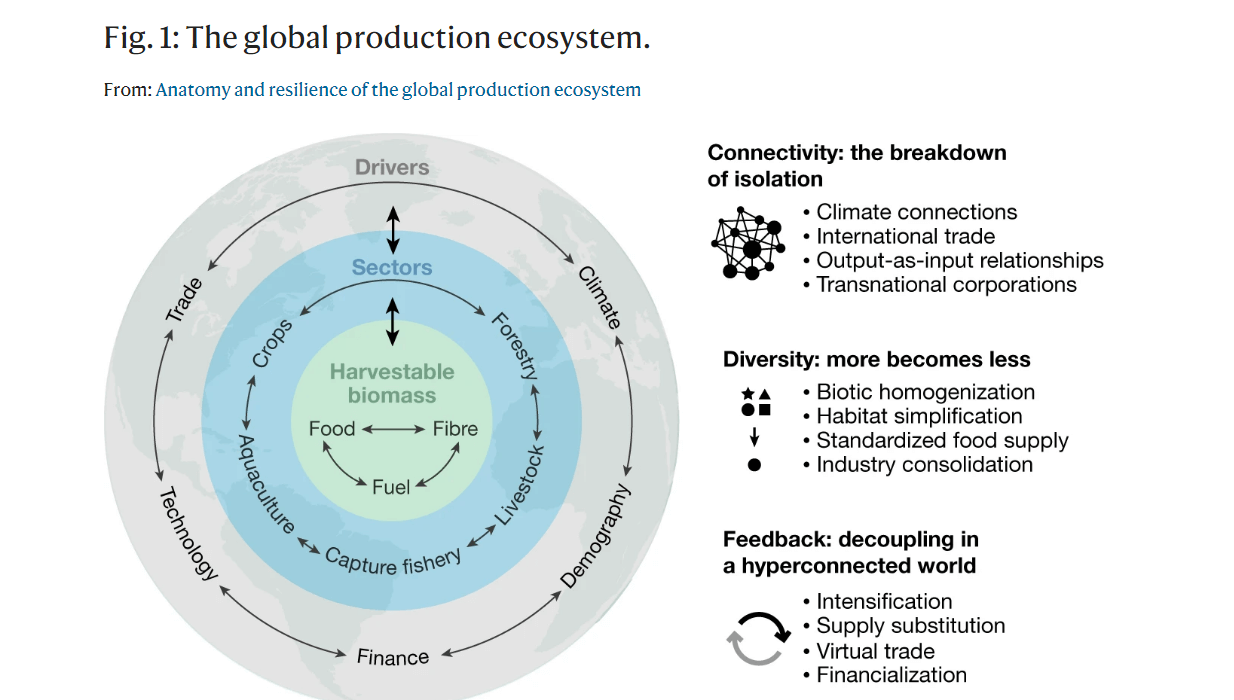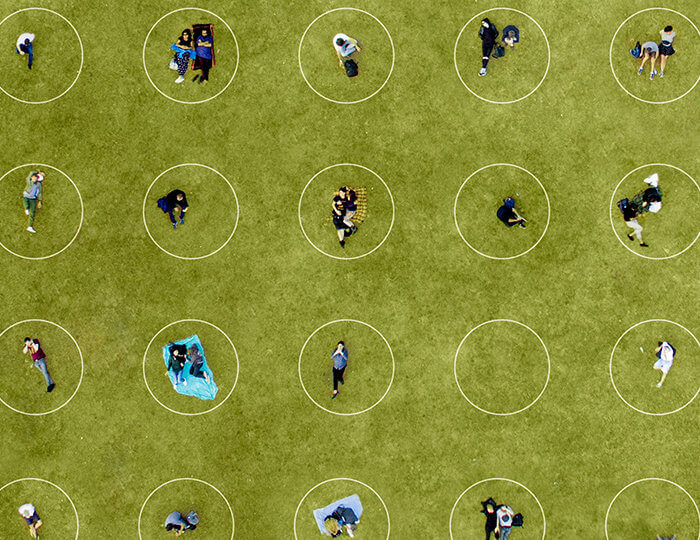NEWS • 2019-11-09
An altered planetary anatomy
Humans have transformed much of the planet to produce more and more food, fibre and fuel, now we need to radically transform this global production ecosystem. A new article suggests solutions strategies for improved sustainability: redirection of finance, increased supply chain transparency, and participation of ‘keystone’ multinational corporations.
Farming, forestry and fisheries are changing the anatomy of the biosphere. This makes us all more vulnerable to new types of global risks that will affect the long-term ability to provide food, fibres and fuel to a growing and wealthier human population, according to a new study published in Naure as part of the journal’s 150th anniversary collection.
The article is written by a team of researchers from the Beijer Institute, the GEDB Academy programme and Stockholm resilience Centre together with Beijer Fellow Steve Carpenter from the University of Wisconsin–Madison, USA. It notes that more than 75 per cent of the world’s land area has already been converted into domains like cities, farmland and timber-producing forests. In the oceans, around 90 per cent of fish-stocks are either overexploited or fully exploited while a rapidly growing aquaculture sector is taking up more coastal and offshore space than ever.
“As available productive land and abundant fish stocks become progressively scarce, the potential for further land conversion, land redistribution and exploitation of new wild stocks as options to meet projected global human demand is dwindling”, says lead author Magnus Nyström.
A “simplified” global production ecosystem
Historically, humans have converted forests, lakes and other natural ecosystems into simplified production systems like croplands, forest plantations and fish farms. This has been carried out with a focus on efficiency and the massive use of inputs such as fossil fuels, fertilizers, pesticides, antibiotics and technology. In parallel, people, places, cultures and economies have become increasingly intertwined across the world, making production ecosystems globally interconnected through international trade and the global market.
Taken together, these changes are gradually converting the biosphere into a “simplified” global production ecosystem that focuses on a small number of harvestable species. For example, pigs and chickens account for 40% and 34%, respectively, of all the meat production in the world, whereas more than 80% of the global fish and shellfish aquaculture production is sourced from 30 “staple” species. Even seemingly unaffected parts of the biosphere are under human influence.

The global production ecosystem. The GPE is characterized by tightlycoupled relationships and reciprocal influence within and betweenharvestable biomass (green inner circle), multiple sectors (blue middle circle)and a broad set of distal drivers (grey outer circle). To the right are the threelenses (connectivity, diversity and feedback) and their key features throughwhich the anatomy of the GPE is described in this paper.
Increasing vulnerability and interconnected risks
The new global anatomy described above is already changing the global risk pattern. Shocks that were previously occurring locally within one sector are becoming “globally contagious” and more prevalent as sectors are intensified and more intertwined.
The fragile anatomy of the global system for production of biomass is one of the grand challenges facing humanity, the authors conclude. To change course, the researchers suggest three overarching strategies:
- Redirecting finance for sustainability, exemplified by actions like divestment from unsustainable palm oil production, the insurance sector refusing to insure fishing vessels involved in illegal fishing, and banks denying loans to clients that do not comply with sustainability standards.
- Radical transparency and traceability, governmental policies that ensure that social and environmental criteria are met along whole supply chains. It also requires education and information to consumers in the form of certification, labelling and public campaigns.
- Keystone actors as agents of change, the handful of large transnational corporations that currently dominate agriculture, forestry and fisheries. In this context, the study also calls for improved science–business partnerships to complement public policies and governmental regulations. One example is the Seafood Business for Ocean Stewardship (SeaBOS) initiative, in which centre researchers directly engage with ten of the world’s largest seafood companies to influence their 600 subsidiaries with operations in at least 90 different countries.
But the researchers warn that the three strategies will never be successful without profound shifts in worldviews and belief systems.
Nyström, J.-B. Jouffray, A. V. Norström, B. Crona, P. Søgaard-Jørgensen, S. R. Carpenter, Ö. Bodin, V. Galaz, C. Folke. 2019. Anatomy and resilience of the global production ecosystem. Nature Volume 575
NEWS



